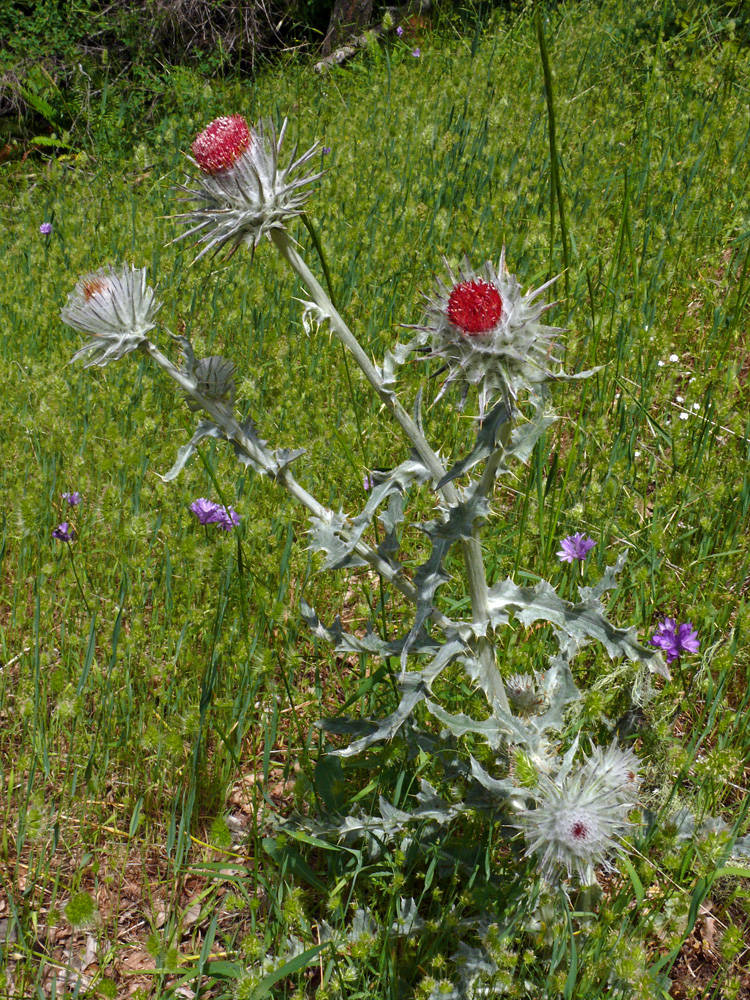Cirsium altissimum
Cirsium occidentale
cobwebby thistle, western thistle
usually 1, usually conspicuously white-tomentose, rarely glabrate.
elliptic to oblanceolate, 6–40 × 1.5–10 cm;
margins pinnate;
lobes often with shallow teeth or again lobed;
spines weak to stout, 1–15 mm;
surfaces white-tomentose, adaxially sometimes thin to glabrate;
basal usually present at flowering, sessile, clasping, decurrent, or petiolate.
ovoid to spherical; (2)3–7 × 2–8 cm, thinly to densely arachnoid-tomentose.
corollas 25–40 mm, red, rarely white or pink;
tubes 8–18 mm;
throats 5–10 mm, gradually narrowed to tubes;
lobes 5–12 mm;
style tips 4–5 mm.
subequal to strongly imbricate; without glutinous ridges, linear to narrowly lanceolate, reflexed or ascending;
spines weak to moderately thick, 1–10 mm.
5–7 mm; light to dark brown;
pappi 20–30 mm.
1–many.
Cirsium altissimum
Cirsium occidentale
Western Mexico and United States. 7 varieties; 2 varieties treated in Flora.
Bridget Chipman



